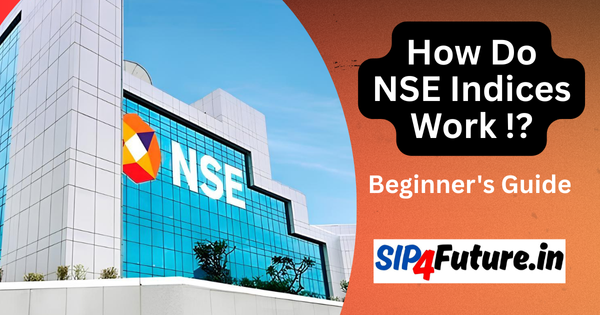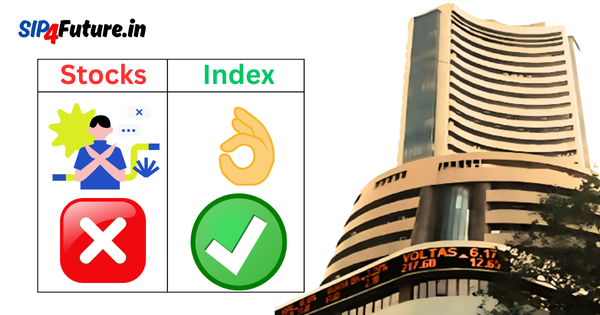Sunteck Realty Ltd., a Mumbai-based real estate developer listed on the National Stock Exchange (NSE) under the ticker SUNTECK, has made headlines with its robust performance in FY25. On May 5, 2025, the stock closed at ₹392.50, reflecting a 2.10% decline for the day. Despite this dip, the company reported record-breaking pre-sales of ₹2,531 crore for FY25, a 32% year-on-year (YoY) increase, with Q4 FY25 marking its highest-ever quarterly pre-sales at ₹870 crore, up 28% YoY. However, annual net profit took a hit, declining 85.15% to ₹150 crore, even as revenues grew 51% to ₹853 crore. This article dives into Sunteck Realty’s financial performance, stock trends, sector dynamics, government policies, and global market influences, offering a comprehensive look at its current standing and future prospects.
What Drives Sunteck Realty’s Record Pre-Sales in FY25?
Sunteck Realty’s pre-sales success in FY25 underscores its strong market positioning in the Mumbai Metropolitan Region (MMR). The company’s focus on premium residential and commercial projects has resonated with high-net-worth individuals and corporate clients. Its portfolio, spanning 52.5 million square feet across 32 projects, includes luxury brands like Signature, Signia, and Sunteck City. The addition of the Nepean Sea Project, with a gross development value (GDV) of ₹5,400 crore, has bolstered its pipeline, contributing to a total GDV of ₹39,370 crore.
The 32% YoY pre-sales growth to ₹2,531 crore reflects robust demand for luxury and ultra-luxury residences, particularly in Q4 FY25, where pre-sales reached ₹870 crore. This performance aligns with broader trends in India’s real estate sector, where top developers reported combined sales of ₹35,000 crore in Q1 FY25, driven by consumer preference for established brands like Sunteck. Strategic acquisitions and equity partnerships have further strengthened its market leadership, as noted in investor presentations shared on platforms like Moneycontrol.
Key Financial Highlights for FY25
| Metric | FY25 | YoY Change |
|---|---|---|
| Pre-Sales | ₹2,531 Cr | +32% |
| Q4 Pre-Sales | ₹870 Cr | +28% |
| Revenue | ₹853 Cr | +51% |
| Net Profit | ₹150 Cr | -85.15% |
| Net Cash Surplus | ₹125 Cr | – |
| Gross Development Value (GDV) | ₹39,370 Cr | – |
Despite the pre-sales and revenue growth, the sharp decline in net profit raises concerns. Factors such as increased operating expenses (12.1% of revenues spent on interest and 15.98% on employee costs) and a low return on equity (ROE) of 2.49% over the past three years may have contributed. However, Sunteck’s zero net debt and a negative debt-to-equity ratio signal financial resilience, positioning it well for future growth.
How Does the Real Estate Sector Impact Sunteck’s Stock Performance?
The real estate sector in India has been a mixed bag in 2025, with strong demand in premium segments offset by challenges like rising interest rates and regulatory hurdles. Sunteck Realty operates in the small-cap segment of the Bombay Stock Exchange (BSE), with a market capitalization of approximately ₹5,418.63 crore as of March 17, 2025. The stock’s performance has lagged behind the Nifty Realty Index, which delivered 79.31% returns over three years, while Sunteck’s three-year return was a modest 0.15%.
The sector’s growth is fueled by urbanization, rising disposable incomes, and government initiatives like the Pradhan Mantri Awas Yojana (PMAY), which aims to provide affordable housing. However, Sunteck’s focus on luxury properties insulates it from affordable housing volatility but exposes it to macroeconomic pressures, such as interest rate hikes by the Reserve Bank of India (RBI). Higher borrowing costs can dampen demand for high-end properties, impacting pre-sales momentum.
Sector Peers Comparison
| Company | Market Cap (Cr) | 3-Year Return | P/E Ratio |
|---|---|---|---|
| Sunteck Realty | 5,418.63 | 0.15% | 26.92 |
| DLF Ltd | – | – | – |
| Godrej Properties | – | – | – |
| Oberoi Realty | – | – | – |
Sunteck’s P/E ratio of 26.92 is higher than the sector average of 15.82, suggesting it trades at a premium. Its beta of 1.31 indicates higher volatility compared to the broader market, making it sensitive to sector-specific and macroeconomic shifts.
What Government Decisions Are Shaping Sunteck Realty’s Trajectory?
Government policies play a pivotal role in the real estate sector, and Sunteck Realty is no exception. The Indian government’s push for infrastructure development, including the Bharatmala Pariyojana and metro expansions in MMR, enhances connectivity and property values in Sunteck’s key markets. For instance, improved infrastructure in Bandra Kurla Complex (BKC), where Sunteck operates commercial projects like Sunteck Centre, drives demand for premium office spaces.
However, recent policy changes have introduced challenges. The government’s decision to allow 100% foreign direct investment (FDI) in the insurance sector, as noted in posts on X, has sparked debates about foreign capital inflows into real estate. While FDI could boost liquidity, concerns about foreign control, raised by political figures like Akhilesh Yadav, may lead to tighter regulations, impacting developers like Sunteck. Additionally, the Real Estate (Regulation and Development) Act, 2016 (RERA), ensures transparency but increases compliance costs, affecting profit margins.
The RBI’s monetary policy stance is another critical factor. With inflation pressures persisting in 2025, the RBI has maintained elevated repo rates, increasing home loan costs. This could temper demand for Sunteck’s luxury offerings, as reflected in the stock’s recent 2.10% decline to ₹392.50 on May 5, 2025.
How Does the Global Market Scenario Influence Sunteck’s Stock?
The global market environment in 2025 is marked by uncertainty, with trade tensions, a strengthening US dollar, and geopolitical risks affecting investor sentiment. The Indian rupee’s depreciation to 87.21 against the US dollar, as reported on February 27, 2025, raises input costs for developers like Sunteck, particularly for imported materials used in luxury projects. Foreign institutional investors (FIIs), holding 19.76% of Sunteck’s shares as of December 2024, have shown cautious optimism, with a slight 0.35% increase in holdings from September 2024. However, foreign fund outflows, driven by global volatility, could pressure the stock.
Sunteck’s international ventures, such as its Dubai project through subsidiary Sunteck Lifestyle International, expose it to global market dynamics. The company plans to invest $10–20 million in this project, leveraging Dubai’s booming real estate market. However, currency fluctuations and global economic slowdowns could impact returns, indirectly affecting investor confidence in the stock.
| Category | Holding (%) | Change from Sep 2024 |
|---|---|---|
| Promoters | 63.24% | -3.85% (3 years) |
| Foreign Institutional Investors | 19.76% | +0.35% |
| Domestic Institutional Investors | 8.25% | -0.36% |
| Public & Others | 8.75% | – |
The gradual decline in promoter holding over three years (-3.85%) may signal a shift in confidence or strategic divestment, though the promoter stake remains substantial.
When Did Sunteck Realty’s Stock Show Resilience?
Despite the profit decline, Sunteck Realty’s stock has shown resilience at key moments in FY25. The stock hit a 52-week high of ₹699 on July 16, 2024, driven by breakout patterns like the inverted head-and-shoulders, as noted on TradingView. However, it has since corrected, trading 18.44% above its 52-week low of ₹347.70 as of March 19, 2025. The stock’s volatility (3.90%) and beta (1.31) reflect sensitivity to market swings, yet its ability to maintain a market cap of ₹5,637 billion amidst global and domestic challenges highlights underlying strength.
The announcement of a ₹1.50 final dividend on September 23, 2024, and a net cash surplus of ₹125 crore have bolstered investor sentiment. Posts on X, such as those from @CNBCTV18Live, highlight the company’s Q4 profit rise of 19% quarter-on-quarter, reinforcing its operational momentum.
What Are the Risks and Opportunities for Sunteck Realty?
Opportunities
- Luxury Market Demand: Sunteck’s focus on uber-luxury and premium projects aligns with growing demand from affluent buyers in MMR and Dubai.
- Infrastructure Boost: Government-led infrastructure projects enhance property values in Sunteck’s key markets.
- Zero Net Debt: A strong balance sheet provides flexibility for strategic investments and expansions.
Risks
- Profit Volatility: The 85.15% profit decline in FY25 raises concerns about cost management and scalability.
- Interest Rate Sensitivity: RBI’s tight monetary policy could dampen demand for luxury properties.
- Global Uncertainty: Currency depreciation and trade tensions may increase costs and impact international ventures.
What Do Analysts Predict for Sunteck Realty’s Future?
Analysts remain cautiously optimistic about Sunteck Realty’s stock, with a median target price of ₹716.75 over the next 12 months, based on eight analyst reports. The high estimate is ₹786, while the low is ₹642, as per Economic Times. Prabhudas Lilladher set a target of ₹700, and Motilal Oswal projected ₹746, reflecting confidence in pre-sales growth and portfolio expansion. Seven analysts have issued a “strong buy” rating, with one recommending a “buy.”
Historical Returns
| Time Period | Sunteck Realty Return | Nifty 50 Return |
|---|---|---|
| 1 Year | -8.31% | – |
| 3 Years | -22.78% | 34.38% |
| 5 Years | 22.25% | – |
The stock’s underperformance compared to the Nifty 50 over three years highlights challenges, but its five-year positive return suggests long-term potential.
Conclusion
Sunteck Realty’s FY25 performance is a tale of contrasts: record pre-sales and revenue growth juxtaposed against a steep profit decline. Its leadership in the luxury real estate market, zero net debt, and strategic expansions position it for growth, but risks like interest rate hikes, global volatility, and profit volatility warrant caution. The stock’s current price of ₹392.50 reflects short-term bearish sentiment, but analyst targets suggest upside potential. As India’s real estate sector evolves, Sunteck Realty remains a compelling player, navigating opportunities and challenges with resilience.
Disclaimer: The information provided in this article is for educational purposes only and does not constitute financial advice. Investing in stocks involves risks, and past performance is not indicative of future results. Readers should conduct their own research or consult a financial advisor before making investment decisions.




